Review: HTC EVO 3D
Jun 14, 2011, 11:00 PM by Eric M. Zeman
HTC's first 3D phone, the EVO 3D, lands on Sprint's network just in time for summer. With 4G and 3D on board, the HTC EVO 3D is poised to be a sequel worth tuning in to.
Form
Is It Your Type?
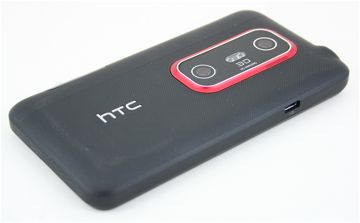
Sprint and HTC are back with a follow-up to last year's smash hit WiMax phone, the EVO 4G. This time around, HTC and Sprint have raised with bar by adding a camera that captures both still photos and video in 3D, plus a 3D display. Are these new features enough to warrant a sequel, or have Sprint and HTC just cooked up gimmicks for you to desire the EVO 3D? Phone Scoop's deep dive will answer all your questions.
Body
The EVO 3D is an attractive smartphone. It borrows heavily from last year's model, but makes some tasteful changes that let this new device look current. The material - mostly plastic, rubber, and glass - are of the best quality and feel fantastic in the hand. Despite its size and weight, the EVO 3D doesn't feel ridiculously large. The combined soft-touch paint job and ribbed texture of the battery cover give the EVO 3D an amazing amount of traction against your skin. It may as well be glued into your palm. Of course, these also provide some friction when you're trying to get it into a jeans pocket.
Unlike the HTC Sensation 4G, which has a fantastic feel to its front face, the EVO 3D has a sharp ridge framing the display. This edge is somewhat uncomfortable at times. Circular capacitive touch buttons rest below the EVO 3D's display, and are similar to the ones on the original. I like that they're separated visually, but there is no texture to the silver circles. Your thumb will slide right over them without feeling any difference. These four buttons offer haptic feedback if you so desire.
On the left edge, the microUSB port is all by itself. This lonely port is naked, not covered by a hatch. The 3.5mm headset jack is on the top, as is the power/lock key. Both are well positioned, and the power/lock key has good travel and feedback to it. I wish it had a slightly larger profile, though. It's a bit too flush with the top surface of the EVO 3D.
Most of the action is packed onto the right side of the EVO 3D. Closer to the top, you'll find the volume toggle. It is too thin, too flush with the side surface, and has somewhat mushy travel and feedback. It's not a satisfying button to use. Below it, we have a duo of controls for the camera. The first is a sliding switch that toggles the camera between 2D and 3D modes. It's a bit stiff, but otherwise works well.
The camera button itself is perhaps the best camera button on any smartphone, ever. It's distinct, easy to find/use, and has absolutely perfect travel and feedback. Hell, it's better than the shutter button on many standalone cameras I have used. It's a two-stage button for auto-focusing, then snapping the shot. Both stages are well defined and let you know exactly when you've focused and when you're about to take the picture.
The twin cameras are positioned on the back of the phone, about 1.75 inches apart from one another. A dual LED flash is between them. The whole assembly is framed in an attractive silver and red rim.
The battery cover (thankfully) peels off easily. HTC has boosted the size of the battery to 1730mAh to help with the battery life. Sadly, it must be removed to access the microSD card.
The Three S's
Screen
The EVO 3D shares the same qHD Super LCD that's found on HTC's Sensation 4G. It measures 4.3 inches and packs in 960 x 540 pixels. It looks excellent. It's bright, colors are rich, and graphics look razor-sharp. It's nearly impossible to pick out individual pixels. You have to break out a magnifying glass for that. HTC has done an excellent job choosing these Super LCD displays, and the EVO 3D's is among the best I've tested.
Signal
Hmm. First, WiMax performance. The 4G radio can find Sprint's WiMax network, but not very consistently. Using the phone in New York City on two separate occasions, it connected to the WiMax network lickety-split, held onto it for a minute, and then dropped it. I wasn't able to reconnect to the 4G network for several moments. The rest of the time I was in NYC, the signal waffled between 4G and 3G, as though it couldn't decide which network it preferred. Data speeds and browser performance were, understandably, inconsistent. When it was connected to WiMax, it was fast. When it wasn't, things slowed down.
As for 3G, out in NJ where 4G isn't live yet, I was able to spend a weekend with the EVO 3D using EVDO-only coverage. How well did this work? In a word: disaster. The EVO 3D barely held onto one bar most of the time. This led to missed calls, plenty of repeat dials, and several dropped calls. Not good. As for 3G data performance, it was better than voice performance for sure. Speeds were decent, and 3G browsing sessions were acceptably quick, even with only one bar. At my home in NJ, one bar is pretty typical for Sprint. It performed on par with other Sprint 3G devices.
Sound
Sound is a bit of a mixed bag with the EVO 3D. Earpiece volume is great. Phone calls are plenty loud in your ear, and border on painful when the volume is set to the max. A mid-level setting is appropriate for most environments. Call quality, however, wasn't so great. Voices were often garbled, making me ask those with whom I spoke to repeat themselves. The speakerphone was also capable of producing plenty of volume, but the garbled quality of calls were magnified here. Ringers and alert tones could be set to maddeningly loud volumes, and the vibrate alert was strong enough to make the EVO 3D dance across my desk.
Battery
HTC gave the EVO 3D's battery a significant boost over the original EVO 4G, increasing its capacity from 1500mAh to 1730mAh. Sprint said they believed that the increase would help squash the well-deserved complaints about the EVO 4G's battery life. While there is a definite improvement, the EVO 3D still does not have what I'd call "good" battery life. Where the EVO 4G barely lasted through lunch time, the EVO 3D at least makes it past 5PM consistently. Under WiMax coverage, it definitely died off in about 10 to 12 hours. In 3G-only coverage regions — with the WiMax radio turned off — the EVO 3D performed only marginally better. Ranging instead between 14 and 16 hours from full charge to dead. Bottom line: charge it every night, and make sure you have a USB cable handy at all times.
Basics
Menus
The EVO 3D runs HTC Sense version 3.0 on top of Android 2.3.3 Gingerbread — exactly like the recently reviewed HTC Sensation 4G. There are some minor differences, but the basics are the same.
First, a word about performance. The EVO 3D has a third-generation dual-core SnapDragon processor with 1.2GHz per core. It is insanely fast. Everything on the phone happens instantaneously. It is, without doubt, the fastest Android handset I've ever used. Given that it is powering 3D features, the added horsepower is indeed welcome. In most other apps and across the entire system, it means outstanding performance.
Is has the same super-cool lock screen with customizable shortcuts for apps such as the phone, camera, and Gmail. It also has seven home screen panels, which are filled up with Sprint's notion of what you might like. Of course, all the home screens are completely customizable.
The main menu and settings menus behave exactly the same on the EVO 3D as they do on the Sensation 4G. The main app menu can be customized heavily depending on user preferences. This includes the addition of folders and other tools to organize applications.
Calls/Contacts
By default, the phone app opens with the dial pad on the bottom half of the screen and your top favorites above it. The phone app automatically sorts through your contacts as you type a number/name, so you can sift through a large contact database quickly. If you've synced with a Facebook account, the device automatically adds not only your friends' Facebook profile pictures to their contact info, it also ports over any phone numbers stored in their Facebook profile. It will easily handle thousands of contacts imported from Google, Exchange, Yahoo, etc.
The EVO 3D, however, does not have the Wi-Fi calling feature on the Sensation 4G.
Messages
The EVO 3D offers the stock Gmail, Google Talk, SMS, and email apps. There's no other instant messaging software on board. The stock apps all work well, as they do on other Android devices.
The EVO 3D also substitutes HTC's FriendStream for Facebook, Twitter, and other apps. Friendstream delivers a stream of status updates and posts from friends, and can sort between status posts, shared links, shared photos, and direct messages. If you want the full feature list for Facebook and Twitter, you'll have to download the native apps from the Android Market.
Despite the presence of a user-facing camera, there is no video chatting software on board that I could find. You'll have to download Skype, Qik, ooVoo, or Fring on your own.
Google's Latitude app is on board; Foursquare isn't.
Extras
Media
Music
The EVO 3D's music powers are slightly different from the Sensation 4G's so we'll look at them more in depth.
First, the on-board music application is very good. I like the way HTC has adjusted the stock player to give it more visual appeal. There are some great equalizer settings available, though you can't access them at all unless headphones are plugged in.
The EVO 3D also has an FM radio, which is a nice feature to have. It worked well in my tests.
For on-device purchasing, the Android MP3 Player/Store application is on board. The latest version of this application doubles as a store and a stand-alone media player if you wish. It also works with Amazon's Cloud Music Service.
Speaking of clouds, if you use Google Music, you'll need to download the newest Android music player to access it, as Google Music doesn't work with the HTC music player.
HTC's ListenNow application is not installed. The EVO 3D also has Sprint Radio, which is a streaming radio service. If you want Slacker or Pandora, you'll have to snag it from the Android Market.
Video
On the video side of the equation, your options include the stock YouTube application, Sprint's Mobile TV application, and HTC's Watch service (read about Watch in the Sensation 4G review.
One thing the EVO 3D does that most other handsets don't is play back 3D video content. For example, the EVO 3D is preloaded with a 3D version of Green Hornet. I searched the Watch application for other 3D content, but wasn't able to find any. Even so, you can watch the entire Green Hornet movie in 3D on the handset if you wish. It's pretty cool, though with so little 3D content available from Hollywood for mobile devices such as the EVO 3D, it's hard to say if this will be useful in the future. Of course, it plays back the 3D content - including HD video - captured on the device itself.
2D video content that you record, side-load, or download is played back in the gallery application, as is 3D content. 3D content that is pre-loaded (i.e., via WatchNow) needs to be played in the WatchNow app.
Camera
Camera
The camera software itself — whether you're shooting in 2D or 3D mode — is exactly the same as on the Sensation 4G.
The camera application launches quickly and offers plenty of controls for adjusting settings and other behaviors. There is a strip on the right side of the viewfinder to access many of the settings, but more fine-tuning is available if you care to hit the menu key.
The EVO 3D has touch-to-focus; if you see something on the display and you want it to be in focus, press it. The camera will focus on that spot. Press the shutter button on the screen to actually take a picture. The EVO 3D focuses and shoots pictures very quickly. The review screen lets you send the photo off wherever you want with just a few quick taps.
Gallery
As with other Sense phones, the EVO 3D uses HTC's gallery software. It can be opened from either the camera or the menu, and presents pictures in either a timeline or via grid. The timeline mixes pictures and videos into one long stream of images and movies. The entire stream flows back and forth in a fluid manner as you swipe your finger to and fro.
The major difference is how it treats 2D/3D content. They can be segregated or lumped together. 2D images can be edited as they are, but 3D images are first converted to 2D (i.e., normal) images before they can be edited. The edited versions cannot be returned to 3D. The only real edits you can perform to 3D images are to adjust the alignment of the 3D layers (which would help with focus/clarity). Otherwise, 3D images need to stay pretty much the way they are. You can't even crop or rotate them. It's a bummer that 3D images can't be futzed with.
Media sharing options are solid, and include most of the major social networking and photo sharing services. 2D images can be cropped and rotated, and select effects can be applied. The effects include typical options such as black and white, vintage, antique and so on. If you want to edit things such as exposure, you can do so only with these effects, such as Auto-enhance, Overexposed, and High Contrast.
3D
Photos
Believe it or not, the EVO 3D only has a 5-megapixel camera. How do the photos look?
Viewing 3D content on the EVO 3D's screen gives me a headache, plain and simple. It works without glasses, which means the device has to be held at a certain distance from the eyes and at a certain angle. It takes practice to find this sweet spot. Until you do, the 3D content will make you go cross-eyed.
I don't know if it's a function of shooting 3D images with two cameras or what, but 3D images are almost always in focus and razor sharp. I've never seen such a series of perfect focus in images before. The sharp focus is what lets the 3D pictures pop off the screen and adds layers and depth to the images. Amazingly, other elements such as white balance, color accuracy, grain, and so on are all kept in check. I shot 3D images of some really dumb subjects, and the results were nearly always perfect, even in crummy lighting. In other words, the quality of the photos was outstanding.
Much of this quality carried over to 2D imaging, as well. The EVO 3D has an all-around excellent camera that does a good job and handling most everyday imaging needs.
Video
Take almost everything I said about the quality of 3D still images, and apply it to 3D video. The EVO 3D shoots 3D video in 720p HD (or lower settings if you wish) and the results are extremely impressive.
The sharpness and focus of the video is second-to-none. Color accuracy and white balance were very well controlled. Exposure was the only iffy area I noticed, and it depended a lot on the ambient light available when shooting. Shooting indoors in darker environments will work, but the results tend to be grainy. Turning on the video light helps a lot, but doesn't entirely make up for dark shooting environments. Your best results will be achieved when shooting outdoors (even under gray skies) when there is ample light.
Sharing 3D
Quite honestly, I had a lot of fun shooting 3D images and 3D video. It's a neat medium for capturing events and images, and is pleasing to fool around with (even if it gives you a headache).
My major problem with 3D is not the content, but the sharing of it.
For example, the 3D images I shot on the EVO 3D could only be viewed on the EVO 3D itself, which has the right screen technology. The photos can only be viewed by one person at a time, because of the angle and distance issue. This makes sharing very hard. Essentially, your option is to constantly hand the device over to someone else so they can see the images/video. I can't share any of the 3D images/video with you here in our review, which is extremely annoying.
Of course, if you have a 3D television, you can share 3D content created on the EVO 3D on the TV. I don't have one (and my guess is you don't, either). Since most PCs, photo-sharing services, and web sites and displays in general don't support 3D content yet, you can't really do anything with the 3D images except enjoy them for yourself on the phone.
The only option is to share via YouTube's 3D channel. That, however, requires glasses in order to view the 3D content. Since the EVO 3D itself allows for 3D viewing without glasses, you'll have to go out and purchase a separate pair yourself simply to share your videos on YouTube away from the EVO 3D. That's not a great solution.
Until 3D-capable displays are more widely available, (and cheaper,) 3D content creation will continue to be a niche capability, regardless of how much fun it is and how good the results are.
Browse/Customize
Browser
The EVO 3D uses the stock Android browser. It's a really good browser. Performance of the browser in 3G settings was mostly good. Performance in WiMax markets was, as mentioned, inconsistent. When the device was fully connected to a 4G signal, it was speedy and quick. But when the radio waffled between 3G and 4G networks, it really impacted browsing.
Customize
Phone Scoop has noted in the past how HTC's Sense user interface is one of the best when it comes to user customization. The EVO 3D isn't any different in that regard. Sense lets users adjust about every element of the home screens, wallpapers and other behaviors of the phone.
The new customizable lock screen, in particular, will delight many users. This is an added bonus to the Sense 3.0 software.
Extras
Apps
The EVO 3D can access all of the apps in the Android Market and more. Support for Android is not lacking. If you want apps, they are out there. As with the Sensation 4G, the EVO 3D also has the HTC Hub on board, which is a small app store that lets users peruse HTC-developed applications. Stand-out apps on the EVO 3D include Blockbuster and Spider-Man 3D,
Bluetooth
The EVO 3D can connect with mono and stereo headsets with no problems. I didn't encounter any issues when pairing different devices, but sound quality was pretty bad. Phone calls were nearly worthless via Bluetooth, though music through stereo Bluetooth headphones fared better. It also supports the ability to pair with computers and other phones and pass files back and forth.
Clock
The EVO 3D has the same awesome clock found on the Sensation 4G. The clock that appears on the lock screen can be customized between a dozen different options. Once unlocked, the Sensation 4G has the standard HTC digital clock plus weather report on the home screen. Good stuff.
GPS
Both TeleNav and Google Maps are installed on the EVO 3D out of the box. Both offer voice-guided turn-by-turn directions between points, and can re-route you if you get lost. Google Maps 5 is particularly impressive because it now offers offline use (in case you roam out of network coverage) as well as 3D maps for a limited number of cities. The TeleNav software is very good, and Sprint offers it for free.
Mobile Hotspot
The EVO 3D includes Wi-Fi mobile hotspot, allowing up to five other Wi-Fi devices to connect to the internet via Sprint's 3G/4G networks. The software is fairly intuitive and I had no trouble setting up a hotspot and connecting several devices. This feature, however, destroys the battery. In my tests, the EVO 3D went from a full charge to 40% in less than an hour. That's incredibly bad. Only use the mobile hotspot feature when plugged in.
Wrap-Up
There's no question that the 3D powers are an appealing feature of the EVO 3D. Taking 3D images and 3D video offers that "wow" feeling almost each and every time, and makes even the most mundane subjects somehow more interesting. It helps that the EVO 3D's camera is top notch. Even if the EVO 3D were a 2D-only shooter, it would be worth recommending for the camera performance alone. Obviously, there's more to consider.
My biggest gripe with the EVO 3D is the wireless performance, It's bad enough that the WiMax radio barely worked, but add to that poor 3G performance, and poor voice performance, and you've almost killed off all the reasons to buy any phone. Crummy battery life doesn't help, either.
Aside from the 3D features, the EVO 3D's best feature is HTC's Sense 3.0 user interface. Sense 3.0 is fantastic, and makes the EVO 3D a highly capable and customizable smartphone.
In the end, it boils down to what's most important for you. If you value performance of the wireless radio more than anything else, the EVO 3D is not for you. If you don't mind some sketchy behavior and are lusting after that 3D camera, I won't blame you.

Comments
NOT A GOOD IDEA
No complaints with mine
If there was a software or hardware issue, it must have been solved.
Wow another bad review
http://www.engadget.com/2011/06/15/htc-evo-3d-review/ »
The only real negatives are the battery life, call quality, and signal performance. Almost all other aspects of the device are fantastic, and I said that.
it's the coverage, not the handset!
Call Quality/ 3G & 4G Issues
Looking at the glass half full... 😁
Question for Eric.
I currently own the EVO 4G. I was really thinking of trading up to the 3D. However, I am disappointed with the results of the review section on 4G and 3G connectivity. This has me rethinking my purchase.
My question is, what is the comparison of the 3D and the EVO 4G for signal? Did the tests not prove similar for both? In other words, were the two performed under the exact same tests but with two different outcomes?
Here in upstate NY, my EVO has performed with excellence. I will be basing my purchase according to the results of this comparison.
If the EVO 4G suffered the same degradation in your area during tests, I might assume the EVO 3D will most likely remain equivalent to what the EVO 4G is performing currently i...
(continues)
(continues)
However, PCMag *did* do a direct comparison with an EVO 4G and also found that the EVO 3D performs terrible with respect to 3G voice quality and data.
My result was not unique.
Also...
(continues)
I don't think this is a fair review either.
Sounds like Sprint's coverage in his home is spotty already, so any phone won't work as intended in his home.
I went to WV a few months ago, and my T-Mobile phone hardly ever got a signal. Can't blame that on the phone...
(continues)
Redonkulous!












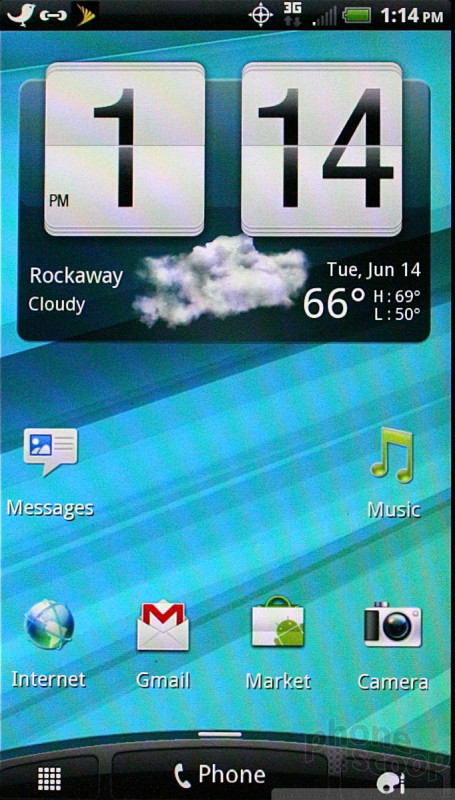






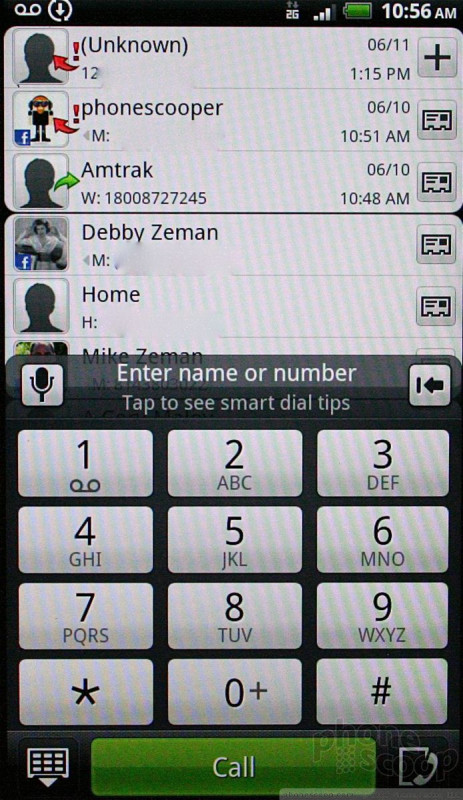





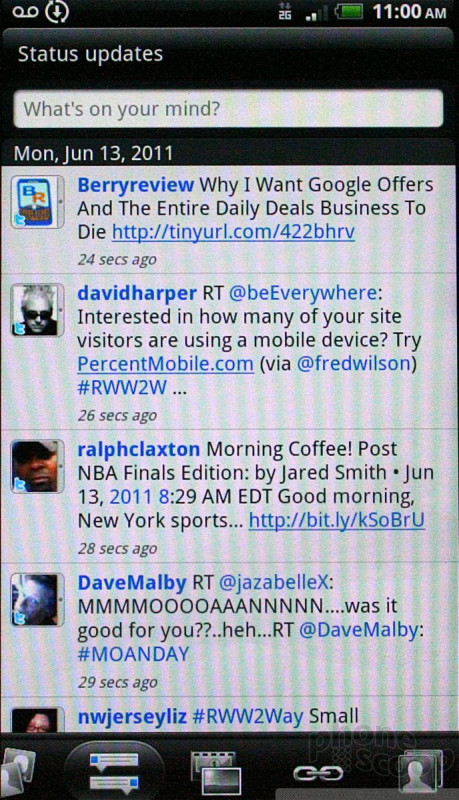














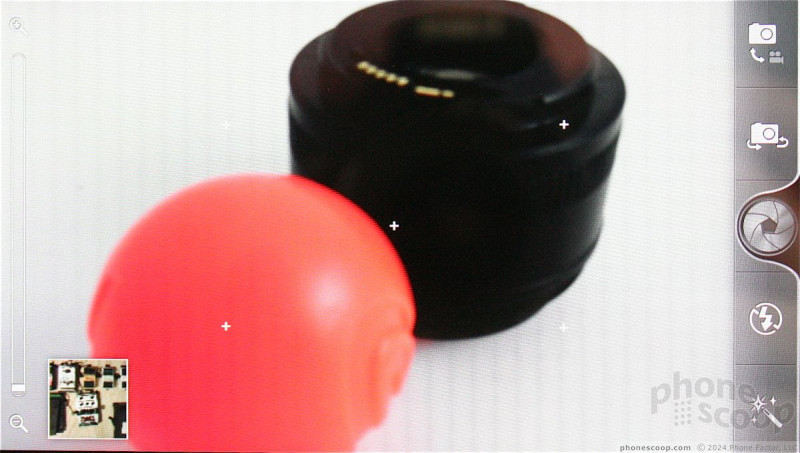









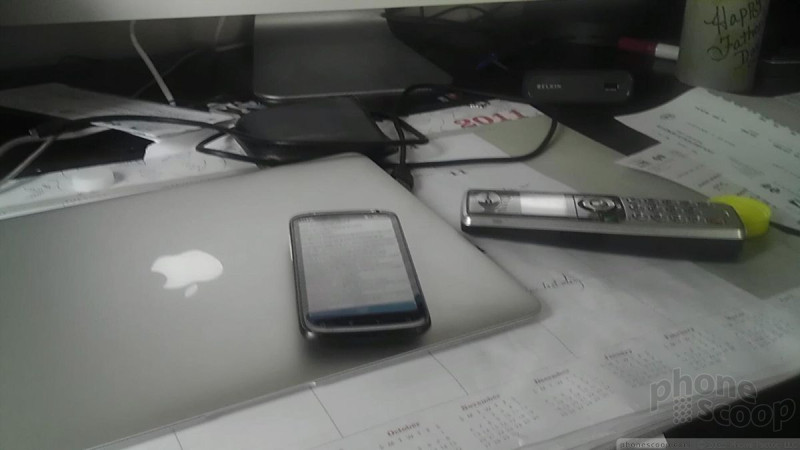













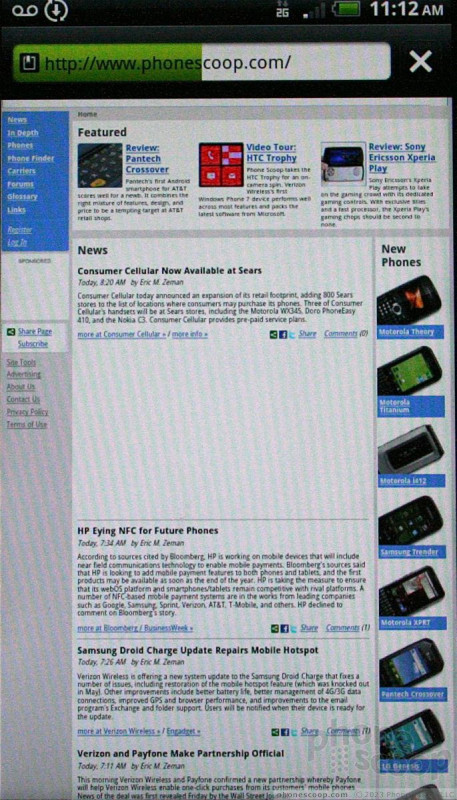



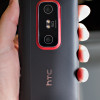 Hands-On: HTC EVO 3D, Samsung Nexus S 4G
Hands-On: HTC EVO 3D, Samsung Nexus S 4G
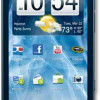 HTC EVO 3D Brings Stereoscopic Powers to Sprint
HTC EVO 3D Brings Stereoscopic Powers to Sprint
 HTC EVO V 4G / EVO 3D (CDMA)
HTC EVO V 4G / EVO 3D (CDMA)





